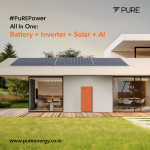The kitchen is frequently seen as the center of the house, where practicality and creativity coexist. Modular kitchens have evolved over time from simple areas for cooking to fashionable, functional, and customized areas that represent contemporary living. Kitchen design trends are constantly changing to balance innovation, convenience, and beauty as lives change. Modular kitchens provide the perfect answer by fusing adaptability with clever design features that satisfy a range of requirements and preferences. Examining the newest modular kitchen ideas can help you create a room that is both aesthetically pleasing and functional, whether you’re remodeling existing kitchen or constructing a new one.
The focus on minimalist aesthetics is one of the most notable trends in modular kitchen design. Modern kitchens are dominated by simple shapes, clean lines, and clutter-free areas that foster a sense of peace and order. Sleek cabinetry with integrated handles or handleless doors that provide a seamless surface is a major component of this trend. Because of their classic appeal and capacity to enlarge and open up the kitchen, colors like white, gray, and subdued pastels are preferred. In order to keep worktops free and preserve the aesthetic simplicity that characterizes this style, the minimalist approach also promotes hidden storage solutions.
The use of natural materials in modular kitchens has grown in popularity. Modern finishes like laminate or acrylic can feel cold and clinical, but wood, in particular, gives warmth and texture. To create a sophisticated yet welcoming ambiance, designers are combining solid wood cabinets or wooden veneers with stone counters like granite or quartz. Natural materials are durable and provide a link to nature, which goes hand in hand with the growing need for sustainable and eco-friendly design options.
Modular kitchens are changing as a result of the use of smart technologies. Wi-Fi-enabled appliances that can be operated by voice assistants or smartphone apps are becoming commonplace. Convenience and economy are increased with automated lighting systems, induction cooktops with accurate temperature settings, and smart refrigerators with touchscreens and built-in cameras. These developments satisfy the needs of the contemporary customer who values sustainability and technology by simplifying cooking and enabling improved energy management.
Another popular trend in modular kitchen design is open shelves. Open shelves provide a means of showcasing appealing cookware, glassware, and decorative things, yet closed cabinets is still necessary for concealing clutter and keeping a clean appearance. This method breaks up the monotony of solid cabinet fronts and gives the kitchen flare and charm. Open shelves are made of materials like glass, metal, or reclaimed wood and are frequently combined with under-shelf lighting to draw attention to the items on show and create atmosphere.
The traditional neutral color scheme is no longer the only color trend in modular kitchens. Statement cabinets or kitchen islands that serve as focal points are being made with striking hues like matte black, navy blue, and forest green. When contrasted with lighter backsplashes and countertops, these deep colors give the room depth and drama. Particularly popular are two-tone kitchens, in which the upper and bottom cabinets have different finishes or colors. This method helps distinguish various functional areas in the kitchen and adds visual flair.
A key component of modular kitchen design, the kitchen island’s function keeps growing. Islands are now used as workstations, casual dining areas, or storage locations in addition to offering additional countertop space. Islands with built-in microwaves, wine coolers, and even little sinks are common in modular kitchens. The social element of kitchens is enhanced by multipurpose islands, which let family and friends meet together to cook or eat meals. This sense of community is enhanced by designs that include seating choices, such as benches or bar stools.
Modern modular kitchens must have adequate lighting for both functional purposes and mood setting. Ambient, task, and accent lighting are all combined in layered lighting designs to produce a flexible and hospitable space. Recessed ceiling lights offer general illumination, while pendant lights over dining areas or kitchen islands give flair and focus. Under-cabinet lighting draws attention to backsplash designs and enhances visibility on work surfaces. Color-changing LEDs and smart lighting systems are examples of innovations that provide adjustable alternatives that may be adjusted to suit various situations or times of day.
Innovative and space-saving storage options are becoming more and more common in modular kitchens. Many homes have small kitchen spaces, so creative storage makes the most of every square inch without sacrificing usability. Essentials are kept accessible and organized with pull-out drawers, revolving corner units, integrated spice racks, and drawer organizers. While deep drawers effectively hold pots and pans, some designs provide vertical storage for trays and cutting boards. Modular kitchens make daily chores more efficient and pleasurable by enabling storage customisation based on personal cooking preferences.
Previously a simply functional feature, the backsplash has developed into a crucial component of modular kitchen design. From traditional subway tiles to elaborate mosaics and large-format slabs of stone or glass, the variety of materials and designs is greater than ever before. In addition to adding individuality and character, bold patterns, geometric shapes, and textured surfaces frequently act as a background that contrasts or enhances cabinets. Some homeowners transform this once-overlooked feature into a focal point by adding color or artistic flair with backsplashes.
Design decisions for modular kitchens are still influenced by sustainability. Consumers that care about the environment are choosing recyclable, renewable, or environmentally friendly products. New kitchens are increasingly featuring water-saving faucets, bamboo cabinetry, and recycled glass surfaces. This trend is supported by energy-efficient appliances that use less water and electricity. With non-toxic paints, coatings, and ventilation systems guaranteeing a healthier kitchen atmosphere, the emphasis on sustainability also extends to indoor air quality.
The newest trends in modular kitchens are centered around personalization. Instead of using prefabricated designs, homeowners prefer kitchens that represent their personal preferences and way of life. This is naturally supported by modular design, which provides units, finishes, and layouts that may be customized. Modular systems can be tailored to create a chef’s kitchen with top-notch appliances and lots of prep space, a family-friendly kitchen with sturdy surfaces and features that make cleanup simple, or a small, efficient urban kitchen. This adaptability guarantees that every kitchen is distinct and ideal for the person using it.
In conclusion, modern modular kitchen design trends blend history with technology, warmth and minimalism, and functionality and style. These kitchens are designed to improve cooking and social interaction, whether it be through the use of natural materials, smart technology, vibrant colors, or creative storage. They make the kitchen a genuinely exciting and delightful place by providing aesthetic enjoyment in addition to meeting the functional demands of contemporary living. Modular kitchens are still a great combination of creativity, personalization, and classic style that will appeal to homeowners for many years to come.










